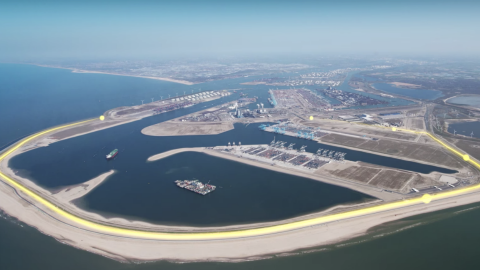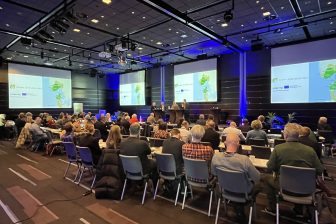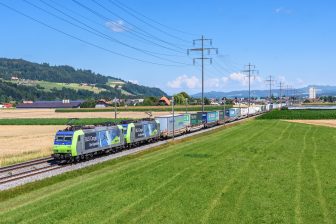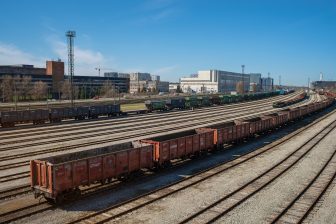
Container Exchange Route in Port of Rotterdam to shorten port procedure
The construction of the Container Exchange Route (CER) in the Port of Rotterdam will commence in the last quarter of this year. The transport solution is expected to make the exchange of containers more efficient, and will enable bundling of smaller rail volumes so that rail operators can optimise their port call.
The CER entails a 11.5 kilometre concrete road connecting the deep-sea container terminals, empty container depots, distribution companies and customs at the Maasvlakte. Multi-trailer trucks will be deployed to transport the cargo to one or several collection points.
Simplified procedure
The goal of the project is to reduce exchange costs between the various companies involved. Moreover, the CER should improve the connections of the port with the European hinterland. The route offers the opportunity to combine container flows, which means that trains, inland vessels and feeder vessels no longer need to go to all the different terminals. “With the CER smaller container flows can easily be transported to other facilities with higher volumes, where the train, inland vessel or feeder vessel will be handled,” explained Arwin Stehouwer of the Port of Rotterdam at Port Event, held in Spijkenisse last week.
“For rail freight operators, this means an overall shorter procedure at the port. Train operators no longer have to call on several terminals to pick up the cargo, but only go to the collection points. As the containers will be bundled, the CER will result in more fully loaded train departures.” For the Dutch port, it means increased transhipment and gateway volumes, enhancing its competitiveness, he explained. “It is a unique concept which, according to my knowledge, does not exist elsewhere in the world.”
Port transport
Currently, not all train operators call all the terminals in the port, which requires the movement of containers via road. Recently, the PortShuttle was launched. Five times a week, this train completes a tour along the container terminals. As a result, the PortShuttle lowers the costs for the exchange of containers up to twenty per cent.
Whether the CER will replace, or complement the PortShuttle is not clear at the moment, but in all likelihood CER will be lower in cost than PortShuttle, said a source at the port. For transport on the CER, a distance-independent charge per TEU will be levied, explained Stehouwer. The price is not yet clear at the moment.
Time frame
The agreement between the terminals and transport operator will be finalised in Q3 of this year, while construction activities will commence in Q4. The concrete runway should be completed in 2020 and become operative in the last quarter of that year, or Q1 of 2021. Earlier this year, the Port of Rotterdam announced it had constructed consortium KWS Infra B.V. & Van Hattum en Blankevoort B.V. to construct the road, a first step towards the realisation of the CER.





